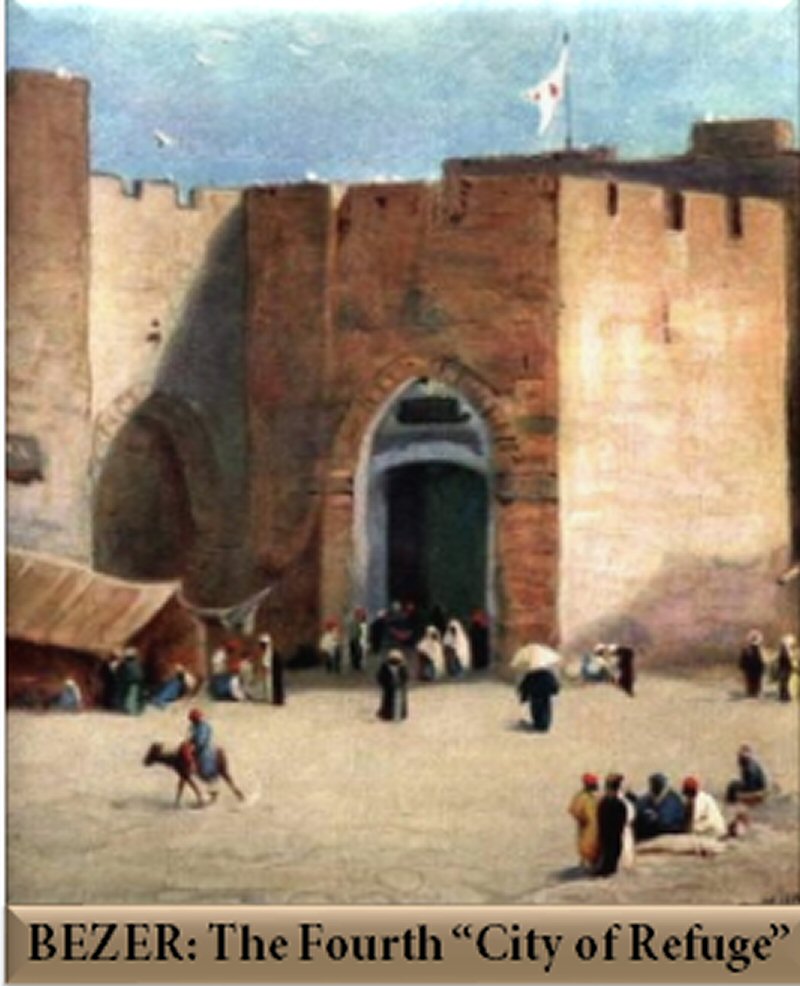History of Ash Wednesday

Practicing Christians, from the earliest ages set aside some time for self-denial as a preparation of the feast of Easter. The Christian Lent, probably like other observances is of Jewish origin corresponding with their preparation to the yearly the act of making amends or reparation for guilt or wrongdoing; atonement. Their humiliation began 40 days before the act of making amends for wrongdoings. The Christian lent is 40 days before the commemoration of the act of makings amends for guilt or wrong doings of the sins of the whole world. (Episcopal Church. 1834. p 51).
The 40 days is the number of years the children of Israel did penance in the Wilderness; the number of days Moses fasted in the Mount, and Elias in the Wilderness: The Ninevites had this number of days allowed for their repentance; and our Lord, when he was pleased to fast in the wilderness, observed the same length of time. Lent is a Saxon word, signifying the Spring. (Episcopal Church. 1834. p 51).
Ash Wednesday is the beginning of the journey toward Easter and eventually toward death. It proclaims to this culture the hope of paschal mystery, that by living the baptized life we have the grace to die so that we might truly live. (Connell. 1998. p.8).
It is impossible to determine accurately the date at which the imposition of ashes, which originally formed a part of the public penance for grievous sinners, became a custom applicable to all the faithful. It is demonstrably at least as old as the synod of Beneventum in 1091, which expressly commands it for clergy and laity alike. (Jackson. 1908–1914. p314).
The history of Lent reveals traditions rich with meaning. Lent deepened the experience of early Christian community as new believers were baptized and as the events of Christ’s death and resurrection were celebrated. The liturgical rites of most churches, there is a pastoral exhortation to the people at the beginning of the Ash Wednesday liturgy that expresses well the focus of Lent. The first Christians observed with great devotion the days of our Lord’s passion and resurrection, and it became the custom of the Church to prepare for them by a season of penitence and fasting. This season of Lent provided a time in which converts to the faith were prepared for Holy Baptism. It was also a time for those who, because of notorious sins, had been separated from the body of the faithful and were reconciled by penitence and forgiveness, and restored to the fellowship of the church. (Webber. 1994. p224).
Ash Wednesday was traditionally the day for the beginning of Lent, Ash Wednesday gets its name from the custom of dabbing ashes on the head as a sign of penitence. This was originally a part of the discipline of public penitence and from the tenth century came to be used generally for all who attended this service: one explanatory formula read (from Genesis 3:19), “Remember, O man, that you are dust, and unto dust shall you return.” When Lent was regarded as the church’s opportunity to enter into the Lord’s discipline of forty days in the wilderness as preparation for ministry, it was recognized that the six weeks following the six Sundays of Lent allowed for only thirty-six days of fasting (Sunday always being a festival of the resurrection). So four preliminary days of fasting were added, and thus the season began (at Rome in the middle of the fifth century) on the Wednesday preceding the first Sunday in Lent. (Elwell.2001. ppg105–106).
Carnival
The Roman Catholic Church makes preparation for Easter on the Sunday before Ash Wednesday. Many countries observed a popular festival called Carnival. There is a variation in the character and order of its celebration. The one thing they have in common is the unrestricted freedom, combined with masquerade, jesting, and burlesque. It is a fact worthy of notice that the name ‘Carnival’ and the manner of observance referred to have alike come to prevail in the regions which have been most permanently under the domination of Rome, viz. France, Italy, and the Rhenish provinces. In Teutonic countries generally, on the other hand, the festival preceding Lent is called ‘Fastnacht,’ popularly—and at one time universally—‘Fasenacht’ or ‘Fasnacht.’ But the observance of Fasnacht and that of the Carnival, while presenting apparently similar features, show at the same time so many points of contrast in conception and procedure as make it impossible to trace the celebration to a single direct source. This corresponds well enough with many customary features of the Carnival, but has no other link of connexion with Christianity. (Rademacher. 1908–1926. p225).
The name ‘Carnival’ is of obscure origin, and admits of various interpretations. A widely received explanation is that which emphasizes the influence of Christianity upon either name, ‘Carnival’ or ‘Fastnacht.’ Here ‘Carnival’ is said to be derived from carne vale, i.e. ‘flesh, farewell,’ an apt enough appellation for the day on which the unconstrained indulgence of the senses was permitted for the last time before the great Lenten fast. Of similar character is the derivation from the name first applied by Pope Gregory to the last Sunday before Lent, viz. ‘dominica ad carnes levandas.’ This was shortened to ‘carnes levandas,’ thence passing, it is said, through the forms ‘carnelevamen,’ ‘carnelevale’ to ‘carneval.’ If this etymology be correct, the Teutonic term ‘Fastnacht’ (Fastens-even, Fasterns-e’en) would signify practically the same thing—the Lenten feast, Lenten-eve, according to the Teutonic practice of commencing the day with the evening. (Rademacher. 1908–1926. p226).
What Is the Origin of Fat Tuesday / Mardi Gras?
According to “Got Questions Ministries, Got Questions? Bible Questions Answered (Bellingham, WA: Logos Bible Software, 2002–2013)” Mardi Gras, which is French for “Fat Tuesday,” is the last day of a season called “Carnival.” The Carnival season is characterized by merrymaking, feasting, and dancing. Mardi Gras is the culmination of festivities and features parades, masquerades, and, unfortunately, often drunkenness and shameless debauchery. Carnival is typically celebrated in Catholic countries of southern Europe and Latin America. The excess of Carnival may not seem to have much in common with the austerity of Lent, but the two seasons are inseparable. The day after Fat Tuesday is Ash Wednesday; therefore, the end of Carnival is followed immediately by the beginning of Lent. Lent is a time of fasting and penance in preparation for Easter. Carnival, then, can rightly be seen as the indulgence before the fast. It is one last “binge” before having to give something up for 40 days. What does the Bible say about all this? There is nothing in the Bible that in any way suggests that early Christians observed either Lent or Carnival. And, of course, there is no biblical support for the kind of fleshly indulgence generally practiced on Fat Tuesday. The Bible expressly forbids drunkenness, carousing, and sexual fornication. Romans 13:13–14 says, “Let us walk honestly, as in the day; not in rioting and drunkenness, not in chambering and wantonness, not in strife and envying. But put ye on the Lord Jesus Christ, and make not provision for the flesh, to fulfil the lusts thereof.”
The liturgy was fundamentally joyous—the enactment of the redemption itself—and this joy spilled over into communal celebrations that took on a worldly, even profane, character. Mardi Gras (“Fat Tuesday”) was a day on which people consumed whatever meat and lard they still had before the Lenten fast began, and in Latin lands it became carnival (“farewell to the flesh”), an excuse for riotous behavior. (Hitchcock. 2012, p170).
Conclusion
Originally Ash Wednesday was a time of preparing the heart for the coming of the Holy Week and Easter, the day our Jesus Christ was Resurrected from the dead. “In the end of the sabbath, as it began to dawn toward the first day of the week, came Mary Magdalene and the other Mary to see the sepulchre. And, behold, there was a great earthquake: for the angel of the Lord descended from heaven, and came and rolled back the stone from the door, and sat upon it. His countenance was like lightning, and his raiment white as snow: And for fear of him the keepers did shake, and became as dead men. And the angel answered and said unto the women, Fear not ye: for I know that ye seek Jesus, which was crucified. He is not here: for he is risen, as he said. Come, see the place where the Lord lay. go quickly, and tell his disciples that he is risen from the dead; and, behold, he goeth before you into Galilee; there shall ye see him: lo, I have told you. (Matthew 28:1-7).
Our Lord and Savior, Jesus Christ spent 40 days in the wilderness preparing for His ministry. (Mark 1:13). The beginning to the Lent season give us an opportunity to prepare our hearts for the Holy Week and the Resurrection of Jesus Christ. If the worldly so chooses to celebrate fat Tuesday/ Mardi Gras or Carnival in a perverted way that is of their choosing and their life. As for me and my house we shall serve the LORD. Joshua 24:15 says it like this: “And if it seem evil unto you to serve the LORD, choose you this day whom ye will serve; whether the gods which your fathers served that were on the other side of the flood, or the gods of the Amorites, in whose land ye dwell: but as for me and my house, we will serve the LORD.”
References:
Connell, Martin. “Ash Wednesday: Meaning and History.” Liturgy 1998, Vol. 15 (1).
Episcopal Church. (1834). An explanation and history of the Book of Common Prayer: Philadelphia, Thomas L. Plowman.
Elwell, Walter A. 2001(). Evangelical Dictionary of Theology: Second Edition (Grand Rapids, MI: Baker Academic.
Hitchcock, James. (2012). History of the Catholic Church: From the Apostolic Age to the Third Millennium. San Francisco: Ignatius Press.
Jackson, Samuel Macauley ed., (1908–1914). The New Schaff-Herzog Encyclopedia of Religious Knowledge: Embracing Biblical, Historical, Doctrinal, and Practical Theology and Biblical, Theological, and Ecclesiastical Biography from the Earliest Times to the Present Day (New York; London: Funk & Wagnalls.
Rademacher, C. (1908–1926). “Carnival,” ed. James Hastings, John A. Selbie, and Louis H. Gray, Encyclopædia of Religion and Ethics. Edinburgh; New York: T. & T. Clark; Charles Scribner’s Sons.
Webber, Robert. (1994). The Services of the Christian Year, vol. 5, The Complete Library of Christian Worship (Nashville, TN: Star Song Pub. Group.
Cite Article Source
MLA Style Citation:
Holstein, Joanne “History of Ash Wednesday:.” Becker Bible Studies Library Feb 2016.<https://guidedbiblestudies.com/?p=2957,>.
APA Style Citation:
Holstein, Joanne (2016, February) “History of Ash Wednesday:.” Becker Bible Studies Library. Retrieved from https://guidedbiblestudies.com/?p=2957,.
Chicago Style Citation:
Holstein, Joanne (2016) “History of Ash Wednesday:.” Becker Bible Studies Library (February), https://guidedbiblestudies.com/?p=2957, (accessed).


